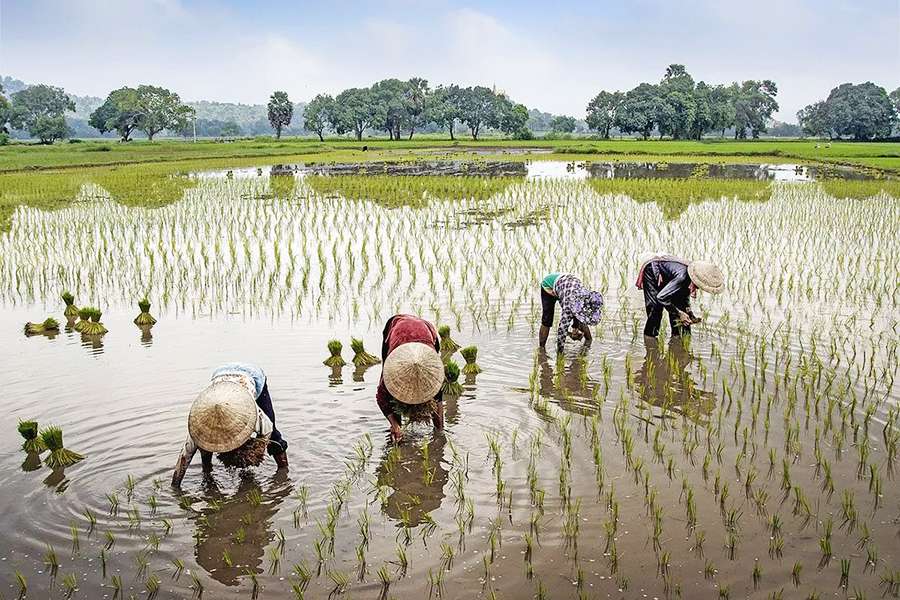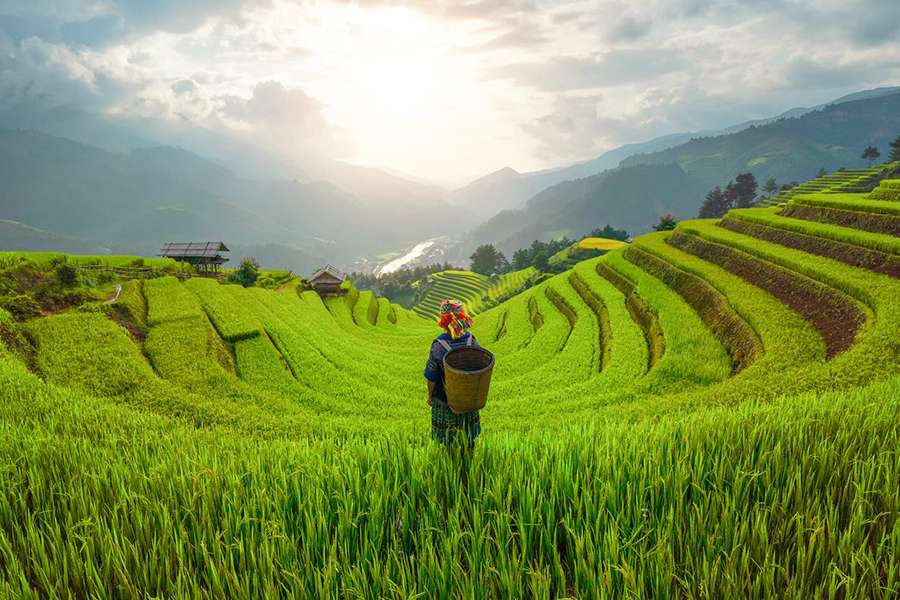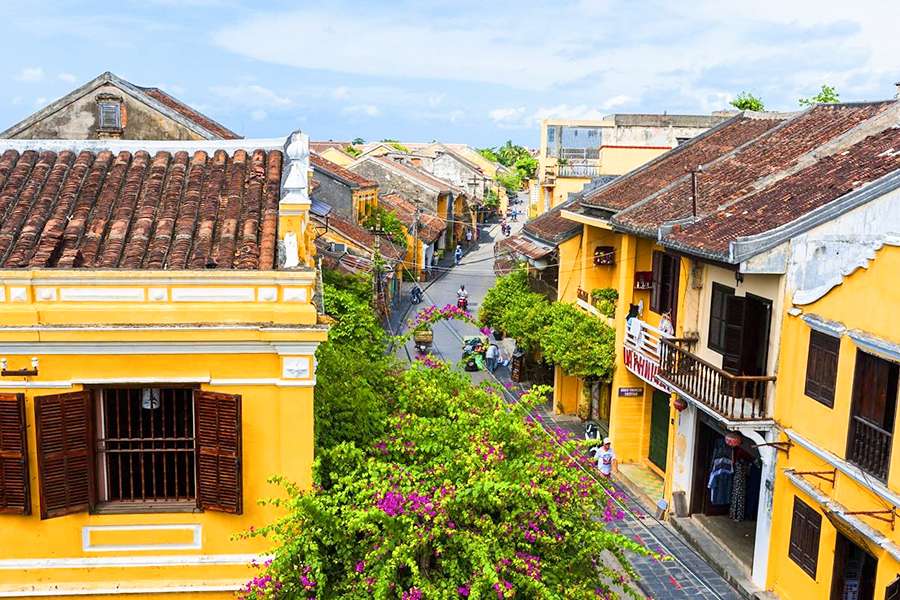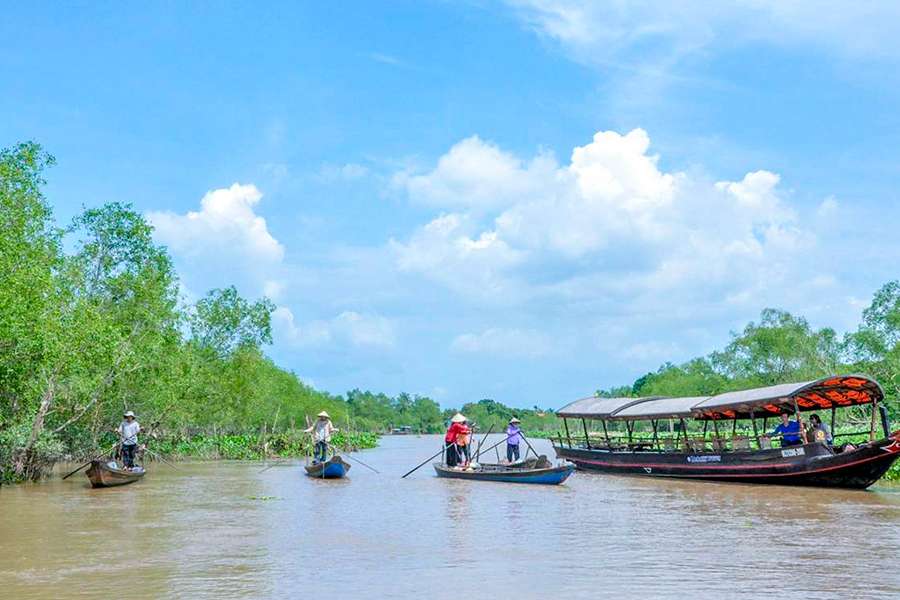What is the Weather in Vietnam like?
Vietnam weather is characterized by its hot and humid conditions, largely influenced by seasonal monsoons. The climate in the south is equatorial, while the north is sub-tropical. Climate differences also depend on altitude. Vietnam is located entirely within the tropical belt of the northern hemisphere, in favor of the tropics than the equator. The position brings Vietnam a high-temperature base. The average temperature is annually from 22ºC to 27ºC. Every year, there are about 100 rainy days with average rainfall from 1500 to 2.000mm. Air humidity is around 80%. The number of sunny hours is around 1500-2000 hours per year, average annual radiation is 100kcal / cm².
Monsoons and tropical climates make the natural moisture of Vietnam change. In general, Vietnam has a hot rainy season and a cold season, with little rain. On the overall temperature, the climate of the northern provinces (from Hai Van Pass to the North) changes with the 4 seasons: Spring, Summer, Fall, and Winter. Vietnam is greatly influenced by the northeast monsoon, therefore, the average temperature is lower than average temperatures in many other countries in Asia at the same latitude. Undoubtedly, the climate in Vietnam varies considerably from season to season and also from region to region.
The Best Time to Travel to Vietnam per region
Generally, there is no best time to visit Vietnam due to the climate and weather varying much from north to south, season to season. Depending on which region and different traveling times of the year you can meet the variety of weather as well as landscapes. Commonly, you can travel to Vietnam at any time of the year with the best Vietnam Tour Operator. February to March is considered the most pleasant time to drop in Ho Chi Minh City because of dry weather and less rain while meeting the cool and dry weather in Hanoi from October to November.
Northern Vietnam
In general, the weather of northern Vietnam is cooler and more pleasant than many other Southeast Asia countries in the same latitude. There are two main distinct seasons. The winter runs from November to March, the weather becomes colder and colder at this time. The weather seems to be warmer in April (this time is the transition of seasons, a leap into summer). This is also a time to see many clouds and frequent drizzle. The average temperature is around 17°C. Particularly, the mountainous areas (in the Northwest) are much colder in winter months, temperature is often below 10°C for a long time even minus degrees. Ice and snow sometimes may cover many mountains and nearby areas in Sapa with the lowest temperature recorded of -3°C in Feb 2008. The hot summer runs from May to October in the whole area. The temperature may reach 37°C in the peaks of June and July.
Hanoi and coastal and surrounding provinces in the Red River Delta receive equal weather. The annual average humidity is around 80% all year round, even though typhoons and heavy rain occasionally hit the areas in some months of summer (September to November). On the other hand, the weather in northern Vietnam (northern provinces from Hai Van Pass to the north) can be divided into 4 separate seasons for Vietnamese people, each season characterizes a feature: spring (runs from March to April) with cool and pleasant weather and autumn (runs from October to December) with dry and cool weather, a chilly winter (from December to February) and a hot and rainy summer (from June to August).
Central Vietnam
Central Vietnam is divided into two sub-regions, coastal lowlands and central highlands, which can be characterized by the combination of climate between the North and the South of Vietnam. The coastal provinces are drier and hotter than the central highlands in the summer, as the Truong Son Mountains prevent them from receiving the huge amount of rainfalls of the south-western monsoon (from April to October). The coastal provinces are usually wetter and colder than the central highlands in winter due to the monsoon season that runs from November to March. Storms and typhoons also hit this area more frequently than the rest of the country in the summer months (runs from July to November). The central highland provinces occasionally receive pretty much average annual rainfall, especially, the two biggest cities in this highland, Dalat, and Pleiku, characterized by cooler and more pleasant weather during the year. Some typical coastal cities in this area like Quy Nhon and Nha Trang enjoy the hotter and wetter weather (22°C-33°C) throughout the year.
Southern Vietnam
The South of Vietnam is typically characterized by a humid tropical climate which is greatly favorable for agriculture, especially growing rice. The temperatures in this area do not vary too much throughout the whole year (around 27-32°C). There are two distinct seasons: the rain season (monsoon season) which lasts from May to November, the heavy rains are frequently occurring every afternoon. As a result, it causes flooding in and around Ho Chi Minh City. The dry season is usually hot from late February to April. Ho Chi Minh City is affected mainly by a tropical climate with high humidity all year round. December to March can be said to be the best time to travel to the central provinces and cities.







